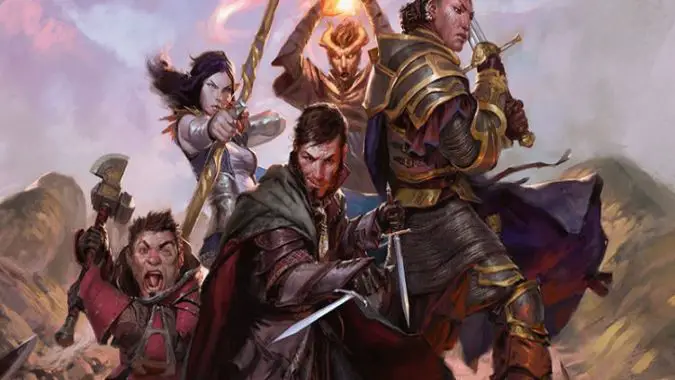D&D Classes 101: Getting started with the Ranger
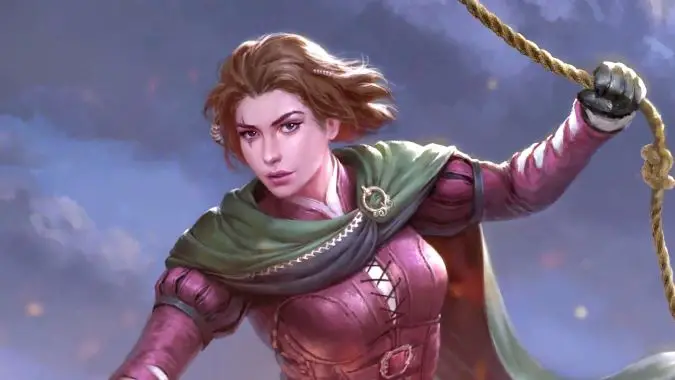
When creating your character in Dungeons and Dragons, the first two major decisions you face are choosing your race, and choosing your class. Let’s say that you’ve chosen Ranger — what does that mean? Let’s take a high-level look at what a Ranger is in D&D and all the subclass options available for D&D Rangers.
A Ranger, despite the name, does not focus on ranged-weapon attacks. They are explorers, they are defenders from specific types of threats, and they are spellcasters. All Rangers have an ability called Favored Enemy, giving them advantage against certain types of creatures for the purposes of tracking and fighting, such as beasts, or dragons, or aberrations. The higher their level, the more creatures they can choose. Rangers also have a Natural Explorer ability, that gives them familiarity with a type of terrain of their choosing, such as forest or mountains. This allows them to ignore tough terrain in that kind of environment, and the party will not become lost when traveling over this kind of land.
Just like the spellcasting classes, Rangers have a spellcasting table, showing how many spells known per level, and how many spell slots they cast at each spell level. Because Rangers are meant to also focus on weapons, they do not have as many spell slots as the other casters, and their spells do not rank as high, capping out at Rank 5 spells. Rangers are more of a hybrid class, not fully weapon or spell reliant.
At level 3, a Ranger chooses a subclass, called an Archetype. This is a big decision which completely changes how the Ranger plays going forward, so we’ll discuss each Archetype separately in terms of your later-game options. There are currently five Archetypes available, with one more in beta testing. We’ll break down these subclasses by the book that introduced them.
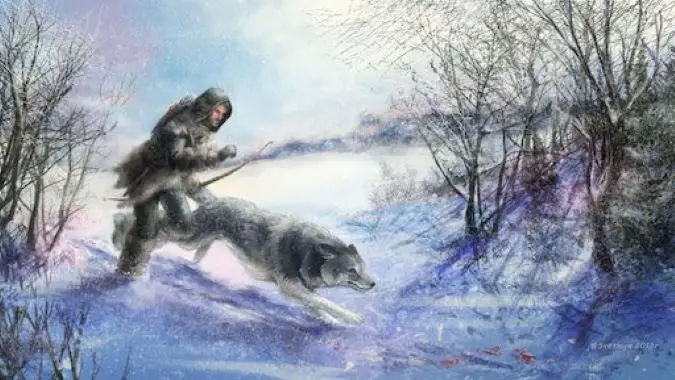
All Ranger subclasses in The Player’s Handbook
The Player’s Handbook offers two subclasses. When creating a character on DnDBeyond.com, the Hunter is free to create.
Hunter Archetype
This Archetype focuses on attacking with weapons, and it does not include a pet. When this is chosen, the Ranger chooses one of three features: Horde Breaker, Giant Killer, and Colossus Slayer. The first, Horde Breaker, allows the Ranger to hit a second target within 5 feet of a target it attacks, effectively giving the Hunter a cleave. Giant Killer gives the Ranger a Reaction to attack any Large creature that attacks them. Finally, Colossus Slayer, which does extra damage to any creature that is not at full health, and can be used once per turn is generally the best option, as most attacks will be against a creature not at full health.
As the abilities are added through the levels in the Hunter Archetype, they focus on defense and melee attacks. This Ranger subclass is meant to be in the heat of the action, not always sitting back and shooting arrows. This gives the Hunter freedom to move around in combat, off-tank mobs, and help to protect squishier members of the party.
Beast Master Archetype
This Archetype is the classic “tame a beast, send it into battle” option. On the Ranger’s turn they use an Action to give the beast a command. Following the Ranger’s turn, the beast takes its turn and follows the command given. Beginning at level 5, the Ranger has Extra Attack. The Ranger can give the beast the command, then make another attack, and then the beast takes its attack. Between levels 3 and 4, the Ranger does not have an attack of their own — their only action is to command the pet.
While there are a large number of beasts that may be tamed by the Ranger, they are not all equally useful. Some beasts do not have an attack. The type of beasts available do not increase with the Ranger level. The beasts do not gain anything from the Ranger’s stats. Another issue with the Beast Master Ranger is that when a pet dies, the Ranger cannot resurrect the pet. The Ranger is expected to go and tame another beast. This takes away from bonding with a pet.
This is a subclass that if a player really wants, the player and the DM should talk about ahead of time and see if there are alternative ways to play it, as well as if homebrew rules can be applied. As it currently stands, this is not the best pet class in the game. In fact, any class can be a pet class, if chosen to played as such.
Unearthed Arcana is the next supplemental material for D&D. This is still in beta. Part of the testing process is revisions for the Ranger class, not just new Archetypes, but changes to the class as a whole. These Archetypes are referred to as Conclaves. Some of the changes do affect Hunter, but the majority of the changes affect Beast Master. Changes include the pet and the Ranger being able to attack at the same time, and the Ranger being able to revive a pet that has been reduce to 0 hit points. This also decreases the number of beasts available to the Ranger as pet options, but ensures that all the options are viable pets.
These changes may be worth talking about with a Dungeon Master now, in a homebrew setting, even though they would not be allowed in an official D&D League Event.
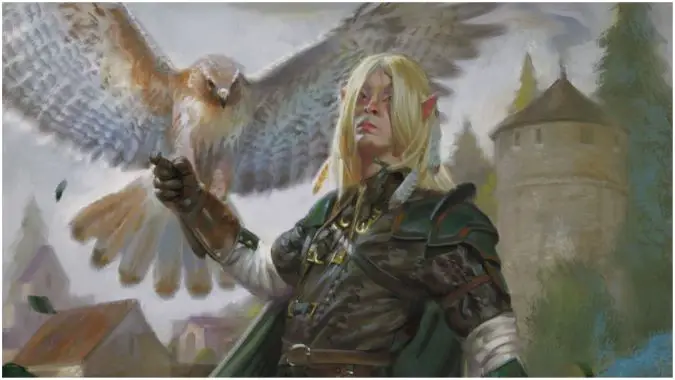
All Ranger subclasses in Xanathar’s Guide to Everything
Xanathar’s Guide to Everything added three new subclasses to the Ranger. Unlike the two from The Player’s Handbook, if trying to use these in DndBeyond.com, there is a cost to unlock this module in the DnDBeyond website. Otherwise, players will need to buy this book, or borrow it from a friend, to use these details for their character.
Monster Slayer Archetype
This turns the Ranger into Van Helsing. This Archetype provides abilities and spells that focus on monsters, stopping magic being cast by other creatures, and dealing extra damage against enemies that are specifically attacking the Ranger. In a world where the adventuring party is seeking and fighting monsters for treasure, this is a useful specialization.
Leveling up provides extra spells that the Ranger knows, most relating to gaining information on creatures, or as a way to crowd control them, like Banishment or Hold Monster. These are added to the spells known without limiting total spells known. However, it does not add to the spellslots of the Ranger, and does not expand how many spells the Ranger can cast per day. And while the flavor of the Archetype is about Monster Slaying, a lot of the abilities are generic enough to be used in any situation, even if the opposing creatures were humanoid.
This is useful for combat, and a great flavor for someone who wants to hunt monsters. Yet, with the new subclasses added here, this was neither the most interesting, nor strongest available.
Horizon Walker Archetype
Rangers hunt threats and protect others, not just from the dangers on this material world, but from those from other planes. Horizon Walker Rangers guard this world from other realms, seeking out portals to watch for invading forces, and venture into the multiverse. Yes, they were getting creative with Rangers.
The additional abilities in this Archetype relate to traveling in the Ethereal Plane, using force damage, and banishing foes. One ability, Distant Strike, adds 10 feet of teleportation to the Ranger’s attack, and if the Ranger attacks two creatures with this Action may then attack a third. Another ability, Spectral Defense, allows the Ranger to move into another plane as a Reaction to an attack, to have resistance against the incoming damage.
This is a fun concept, moving around the battlefield, moving to various planes, and sending enemies there. It redefines what a Ranger is, and shows what this class is capable of when the available spells are opened up to them.
Gloom Stalker Archetype
The idea to this is simple, this type of Ranger is at home in the darkest of places. Whether they are underground, in a cave, or hiding in the shadows, they stalk their prey, unseen. This subclass wants the Ranger to invest in Wisdom, which is added to the Initiative, that determines who goes first in combat. The Gloom Stalker Ranger does extra damage on their first attack of combat.
Gloom Stalkers have Darkvision, regardless of race. Finally, a Ranger can be a human, and see inside a dungeon, without having to light a torch. Another ability is Stalker’s Flurry, when the Gloom Stalker misses with an attack, once per turn, the Ranger can attack again. Hopefully turning that miss into a hit.
With just a few changes, this Archetype turns the Hunter subclass combat into far better combat. With simple tweaks like higher initiative, and turning misses into hits, damage output is greatly improved. This is excellent in dungeons. This is just better for all around regular Ranger combat. This is so popular, that preliminary Unearthed Arcana changes are adding this to the revised Player’s Handbook as a new Conclave, called Deep Stalker Conclave. This will not just be in Xanathar’s Guide to Everything, pay-to-use material, hopefully. This will be part of the free-to-use material, one day.
All Ranger subclasses in Unearthed Arcana
As mentioned, Unearthed Arcana is still in beta testing. This is not permitted to be used in any official D&D League Events. Before using in any home campaigns, check with the Dungeon Master if this is allowed. Even then, the material is still being refined, as with the recent revisions to the psionic subclasses. When using this subclass from Unearthed Arcana, keep checking for revisions.
Fey Wanderer Archetype
The Fey Wanderer guards the border between the Feywild and the Material Plane. An expert of the wily fey and the inhabitants of the material world, this Ranger Archetype must be prepared to negotiate between the two. The Fey Wanderer even has a physical representation that shows they have been gifted by the fey, such as skin and hair that change color to match the season, or delicate horns or antlers sprouting from the head. Wizards of the Coast is having a lot more fun with the Ranger.
The abilities and spells granted by this Archetype focus on the mind. Anything that grants additional damage is psychic damage. Many abilities are focused on Deception, Persuasion, Fear, or Charming a creature. And then there’s the level-15 ability, Misty Presence. The Fey Wanderer Ranger can remove themselves from a creature’s perception for 7 days. The Ranger just doesn’t exist, as far as that creature can see, hear, or smell — for a whole week. That could make for some crazy storytelling in game. From planning a precise attack on an enemy where the Ranger could walk right up to them at an opportune time, to becoming completely invisible to another party member.
An interesting setup, but too early in the beta to know if this will be the final outcome.
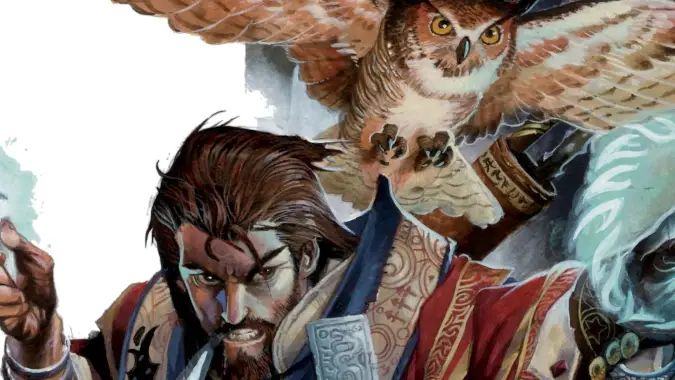
An Evolving Class
The base subclasses for the Ranger have their issues. Beast Master is nearly unplayable in its current state, without a lot of compromise and allowed changes from the Dungeon Master. The Unearthed Arcana changes look promising, but they are still in testing. The Hunter subclass is not even the best ranged option in D&D, there are better Fighter and Rogue options, if a player really wanted to focus on that.
The later subclasses in Ranger are really where this class starts to shine, though again, not necessarily as a ranged class. A weapon-based class with access to plane-jumping is a fun option. And the higher-damage bonus of Gloom Stalker makes it great for dungeons. The deceptive nature of the Fey Wanderer focuses less on combat, and becomes more of an undercover spy character. Perhaps this class will continue to have a range of varying roles.
Please consider supporting our Patreon!
Join the Discussion
Blizzard Watch is a safe space for all readers. By leaving comments on this site you agree to follow our commenting and community guidelines.
